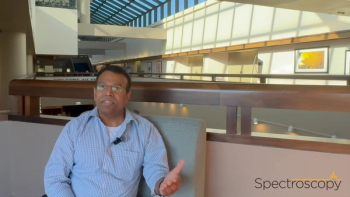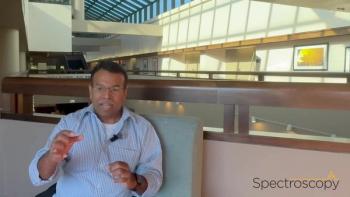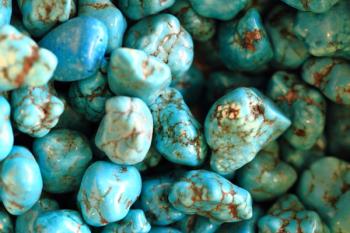
Best of the Week: Infrared Spectra of Functional Groups, Forensic Science Technology, Lithium-Ion Battery Electrolytes
Top articles published this week include some of our columns in the most recent Spectroscopy magazine issue as well as more coverage from the American Academy of Forensic Sciences (AAFS) Conference.
This week, Spectroscopy published various articles that were included in our most recent Spectroscopy print issue, including our columns “IR Spectral Interpretation,” “Icons of Spectroscopy,” and “Atomic Perspectives.” These pieces cover several important areas in analytical spectroscopy. Several key techniques highlighted in these articles include infrared (IR) spectroscopy, mass spectrometry, and inductively coupled plasma–mass spectrometry (ICP-MS). Happy reading!
In the most recent “IR Spectral Interpretation” column, columnist Brian C. Smith focuses on interpreting infrared (IR) spectra of functional groups containing C-O bonds, including alcohols, phenols, and ethers. Alcohols are identified by broad OH stretching peaks and C-O stretching peaks, which help differentiate primary, secondary, tertiary, and aromatic alcohols (1). Ethers, lacking O-H bonds, exhibit sharp C-O stretching peaks, with their number and position distinguishing saturated, mixed, and aromatic ethers (1). The review emphasizes how dipole moment influences IR peak intensity and provides key wavenumber ranges for identification.
The American Academy of Forensic Sciences (AAFS) held its Annual Scientific Meeting in Baltimore, highlighting technological innovations in forensic science. Experts, including Tom Metz, Heidi Eldridge, and Claire Glynn, shared insights from their sessions. Glynn discussed advancements in portable DNA analysis, emphasizing its current impact rather than future potential (2). Rapid DNA technology now delivers results in disaster scenarios within 48 hours, significantly reducing traditional wait times (2). A forensic genetic genealogy expert at the University of New Haven, Glynn’s work advances forensic science applications, aiding law enforcement worldwide.
This month’s “Atomic Perspectives” column explores the use of ICP-MS to analyze elemental compositions in lithium-ion battery (LIB) electrolytes. In the study, ICP-MS provided both quantitative and semiquantitative data for up to 78 elements, helping assess impurities that affect LIB performance and safety (3). The study analyzed three commercial electrolytes, using matrix-matched calibration to improve accuracy. Key findings confirmed the presence of LiPF6, LiBF4, and LiClO4 salts, with trace elements like Cr, Fe, Ni, Cu, and Zn identified as contaminants (3). Long-term stability tests demonstrated the method’s reliability for routine quality control. These insights support LIB manufacturing by ensuring material purity, ultimately enhancing battery efficiency and lifespan (3). The approach also aids in electrolyte degradation studies and uncharacterized sample investigations.
Tomas B. Hirschfeld (1939–1986) was a pioneering chemist, inventor, and researcher whose contributions transformed spectroscopy, analytical cytology, and sensor technology. Born in Uruguay, he earned dual Ph.Ds in chemistry and chemical engineering before moving to the U.S., where he worked at Block Engineering and Lawrence Livermore National Laboratory (LLNL) (4). His work in Fourier transform IR (FT-IR) and Raman spectroscopy, fluorescence microscopy, and fiber-optic sensors helped advance biomedical diagnostics and chemical analysis. Holding over 100 patents and nearly 200 publications, Hirschfeld’s contributions over the years continue to impact national security, environmental monitoring, and medicine (4). His mentorship and research remain important, with awards in his name honoring his legacy in spectroscopy and analytical science (4). This “Icons of Spectroscopy” column from Jerome Workman Jr. reflects on Hirschfield’s career accomplishments and life.
The 77th Annual American Academy of Forensic Sciences Conference in Baltimore highlighted advancements in forensic science, with a strong focus on technology and AI’s role in investigations. In this interview clip, Tom Metz, Chief Science Officer at Pacific Northwest National Laboratory, discusses the challenge of MS in identifying fentanyl analogs and unknown small molecules (5). Metz emphasized the need for improved molecular measurement techniques because of limited access to pure chemical forms (5). With a background in major NIH programs and leadership in metabolomics, he now leads initiatives at PNNL to enhance analytical science (5). The conference showcased AI’s growing impact on forensics.
References
- Smith, B. C. The Big Review V: The C-O Bond. Spectroscopy 2025, 40 (3), 10–13. Available at:
https://www.spectroscopyonline.com/view/the-big-review-v-the-c-o-bond - Wetzel, W. Claire Glynn Discusses Innovations in Forensic Science Technology. Spectroscopy. Available at:
https://www.spectroscopyonline.com/view/claire-glynn-discusses-innovations-in-forensic-science-technology (accessed 2025-03-20). - Zou, A. Benefits of ICP-MS for the Elemental Compositional Analysis of Lithium-Ion Battery Electrolytes. Spectroscopy 2025, 40 (3), 6–9,13. Available at:
https://www.spectroscopyonline.com/view/benefits-of-icp-ms-for-the-elemental-compositional-analysis-of-lithium-ion-battery-electrolytes - Workman, Jr., J. Tomas Hirschfeld: Prolific Research Chemist, Mentor, Inventor, and Futurist. Spectroscopy 2025, 40 (3), 21–25. DOI:
10.56530/spectroscopy.is1173s3 - Wetzel, W. AAFS 2025: Tom Metz Talks About Current Challenges in Molecular Measurement Science. Spectroscopy. Available at:
https://www.spectroscopyonline.com/view/aafs-2025-tom-metz-talks-about-current-challenges-in-molecular-measurement-science (accessed 2025-03-20).
Newsletter
Get essential updates on the latest spectroscopy technologies, regulatory standards, and best practices—subscribe today to Spectroscopy.





